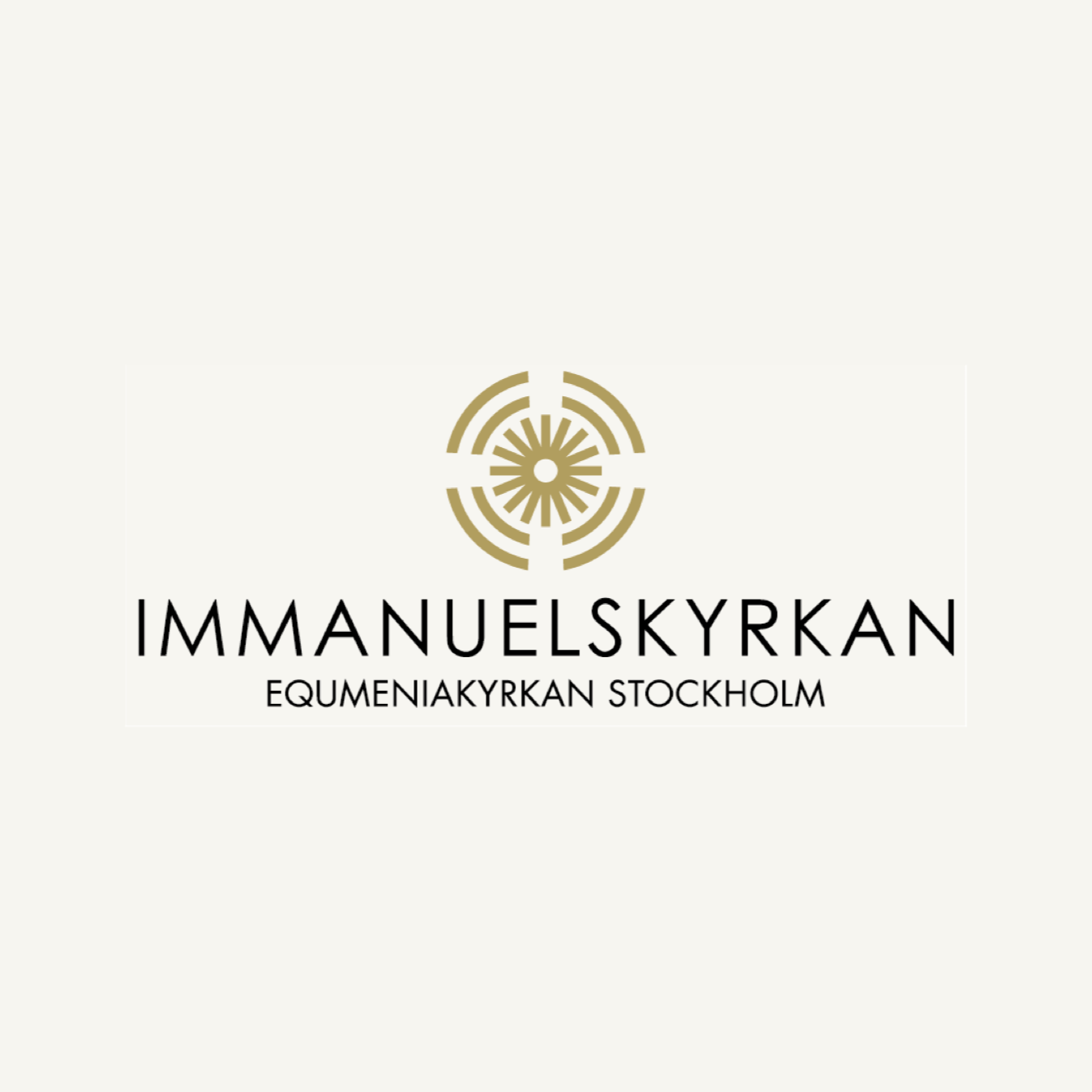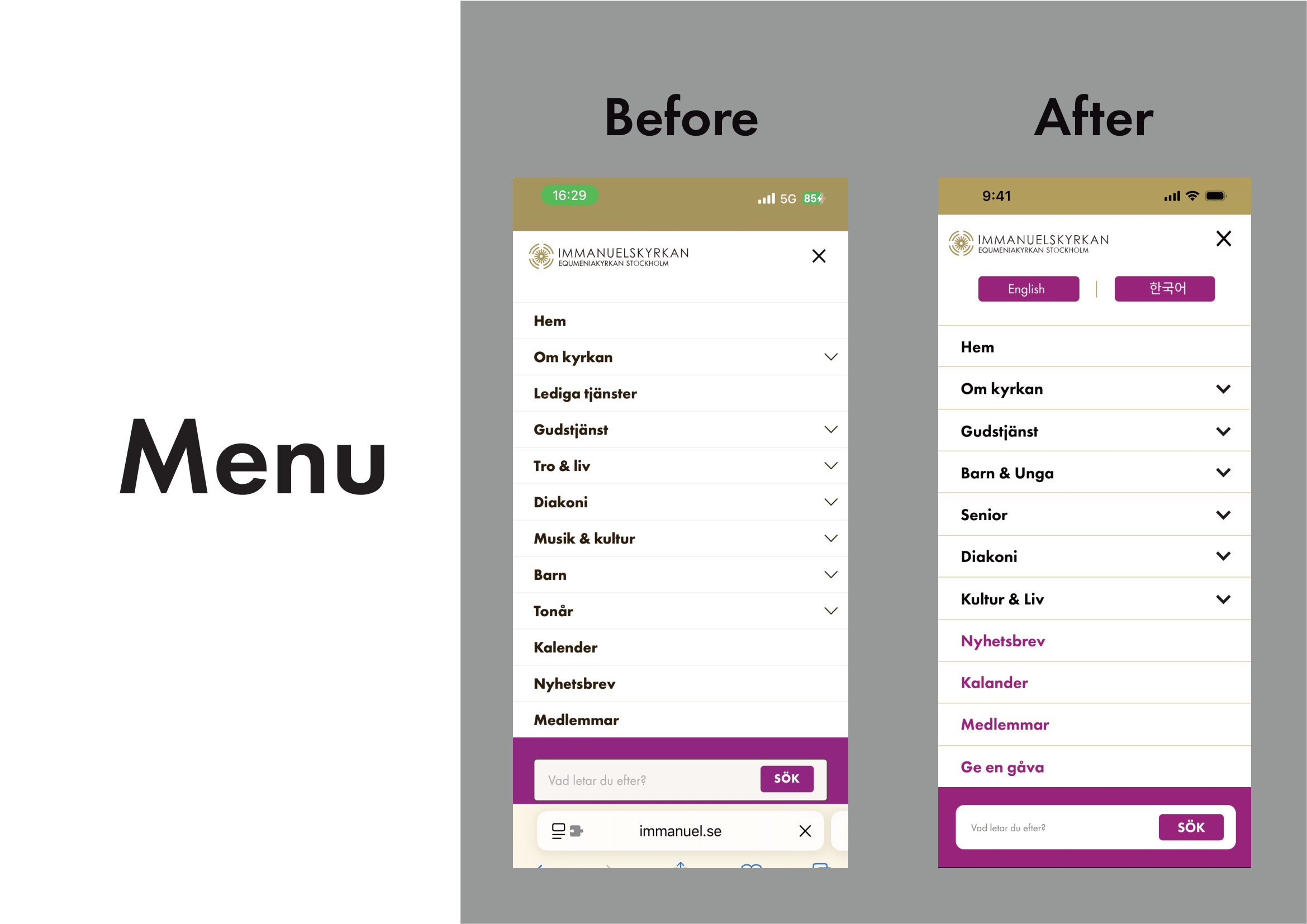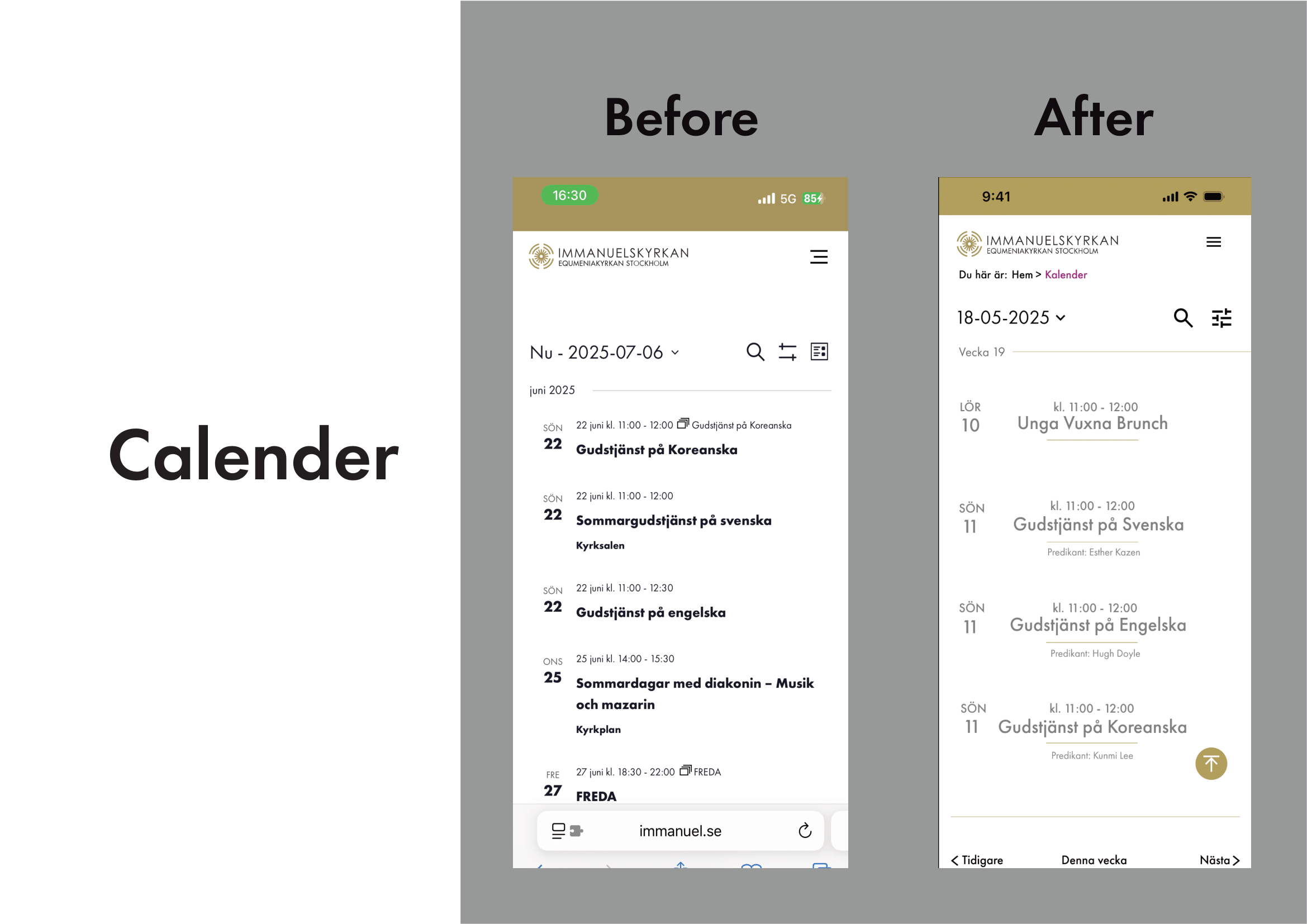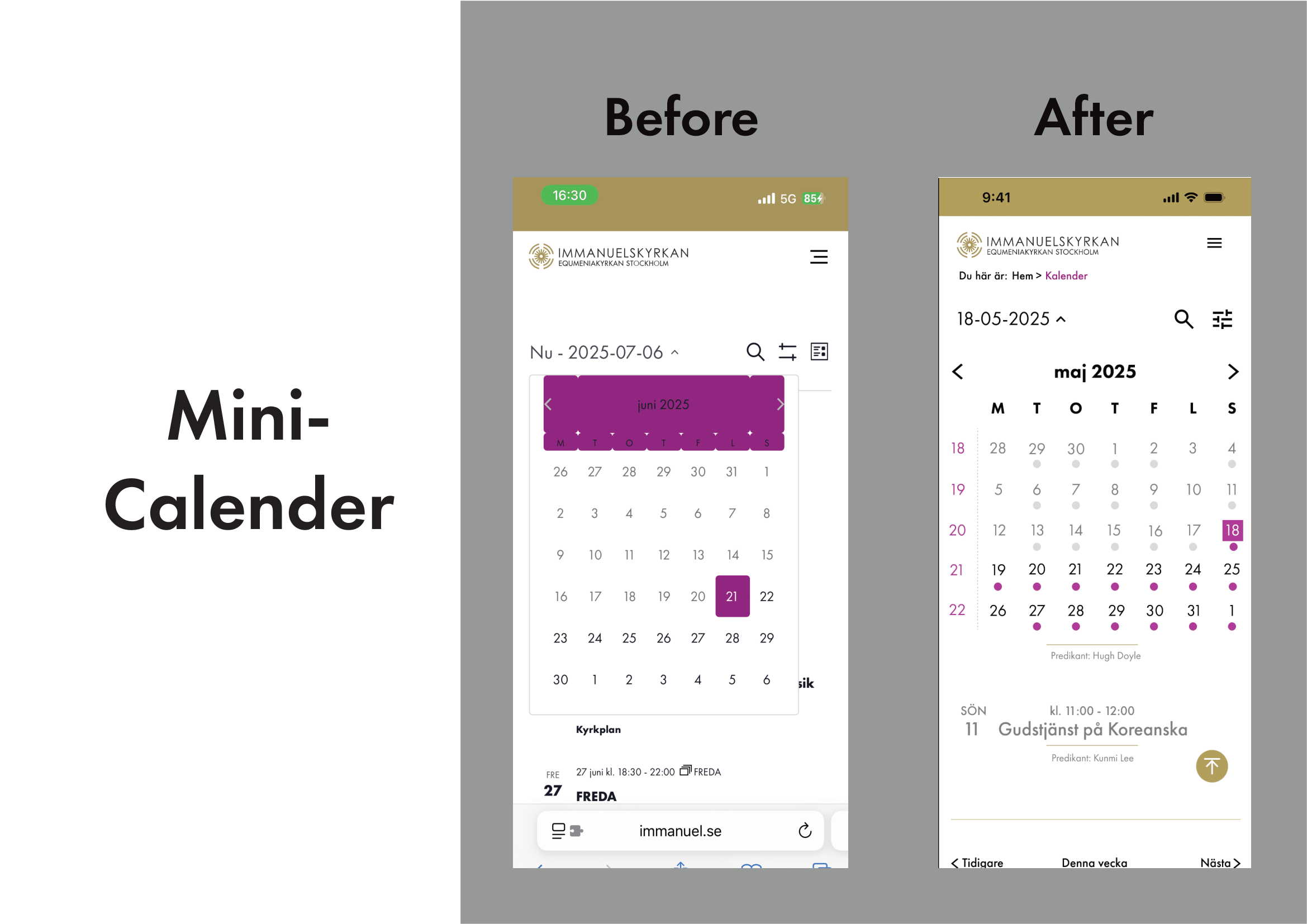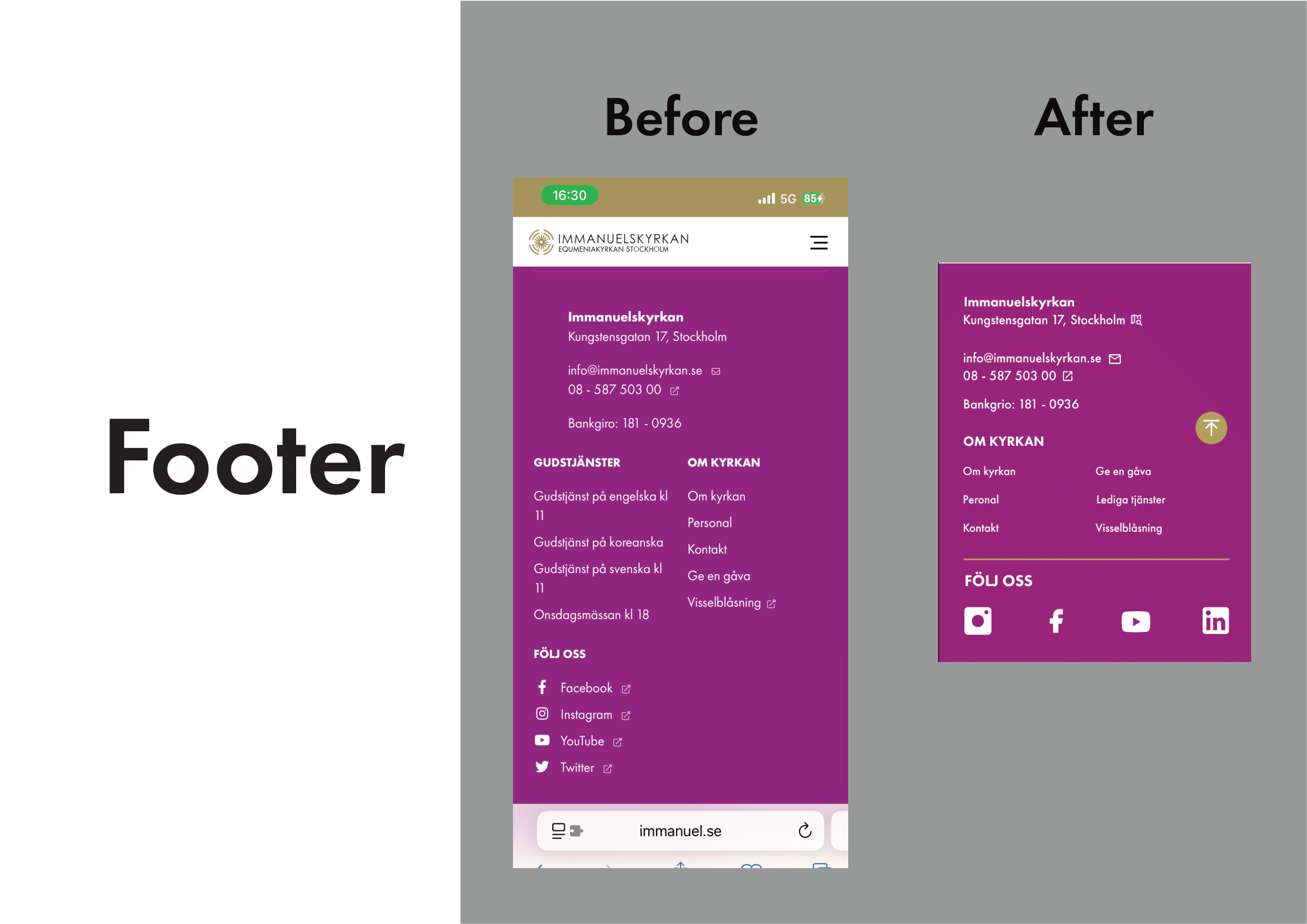Website Redesign for Immanuelskyrkan – A User-Centered Church Platform
Project Type: UX/UI Design, Web Redesign, User Research
Tools Used: Figma, Miro, Google Forms, Google Analytics
Keywords: UX design for churches, user-centered design, web accessibility, Figma prototype, project leadership, team collaboration, church website improvement
Project Overview
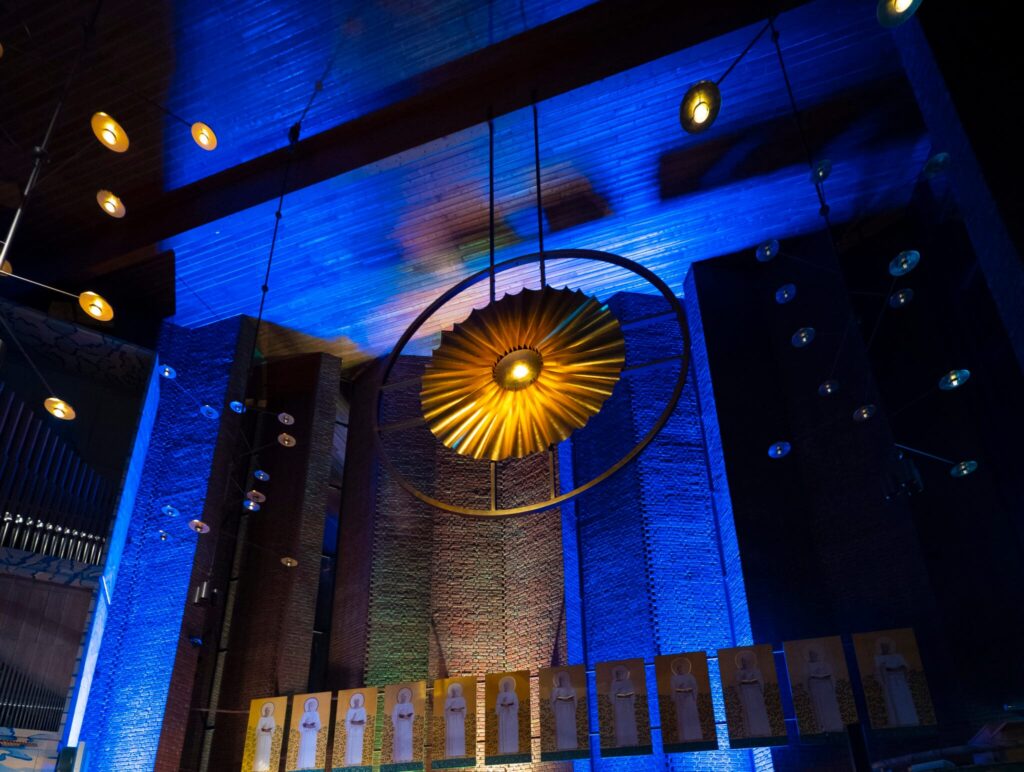
This project focused on redesigning the website of Immanuelskyrkan, a multicultural and multilingual church in central Stockholm. The existing site had issues with navigation, outdated content, and mobile usability. Our goal was to create a more intuitive, inclusive, and engaging experience for its diverse users — including seniors, young adults, and Korean speakers.
Methods
We used a user-centered design process, including surveys in Swedish and English, interviews, personas, empathy mapping, and usability testing. The findings helped us identify pain points like unclear menus, missing or outdated information, and difficulty accessing key features on mobile.
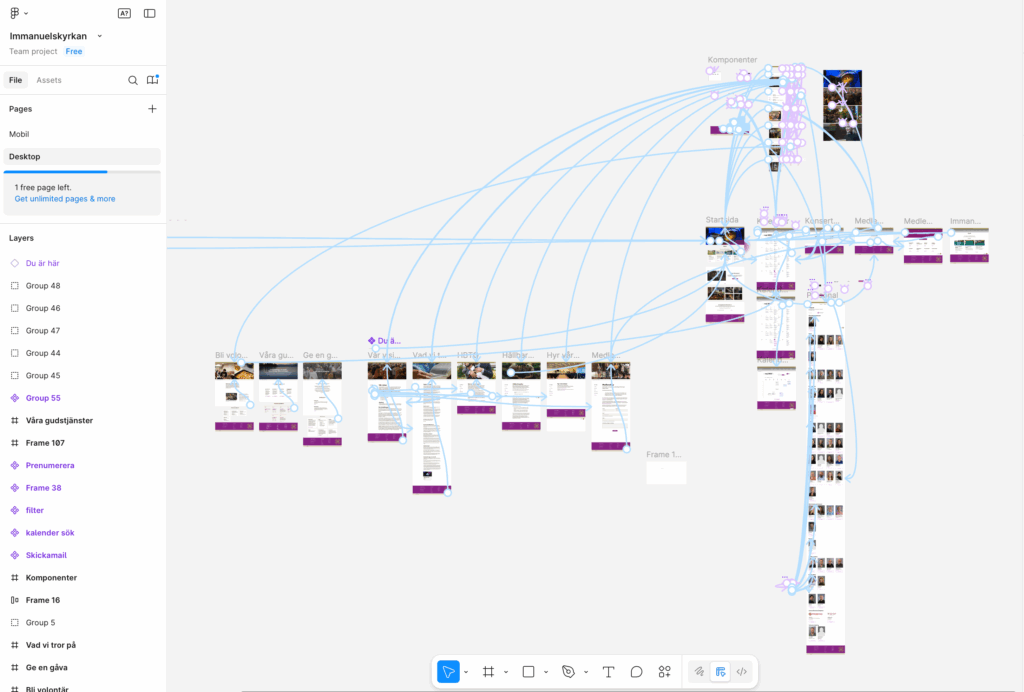
Based on this data, we designed a high-fidelity prototype in Figma, featuring a clearer structure, mobile-adapted views, and custom menus for different user groups. We validated our design through multiple rounds of user testing, which showed a 67% faster task completion time and reduced user frustration.
Some examples of our prototypes
My Role – Project Manager & UX- designer
In this project, beside of being one of the UX-designer, I also took the role of project manager and was also the main point of contact with the client and supervisor. I led the planning phase, set up task structures, and created a collaborative environment for the team.
Key contributions:
- Structured the full project plan, timeline, and task division
- Maintained consistent communication with the client and responded to feedback
- Led team discussions, managed internal conflicts, and encouraged open dialogue
- Organized research activities, user interviews, and surveys
- Led the design decision-making through dot-voting and team workshops in Miro
- Delivered visual documentation and prototype updates to the client
Thanks to effective teamwork and structured communication, we were able to balance both user needs and client expectations. The final prototype clearly improved usability and accessibility, and the process gave us important insights into how digital tools can support community engagement in faith-based organizations.
